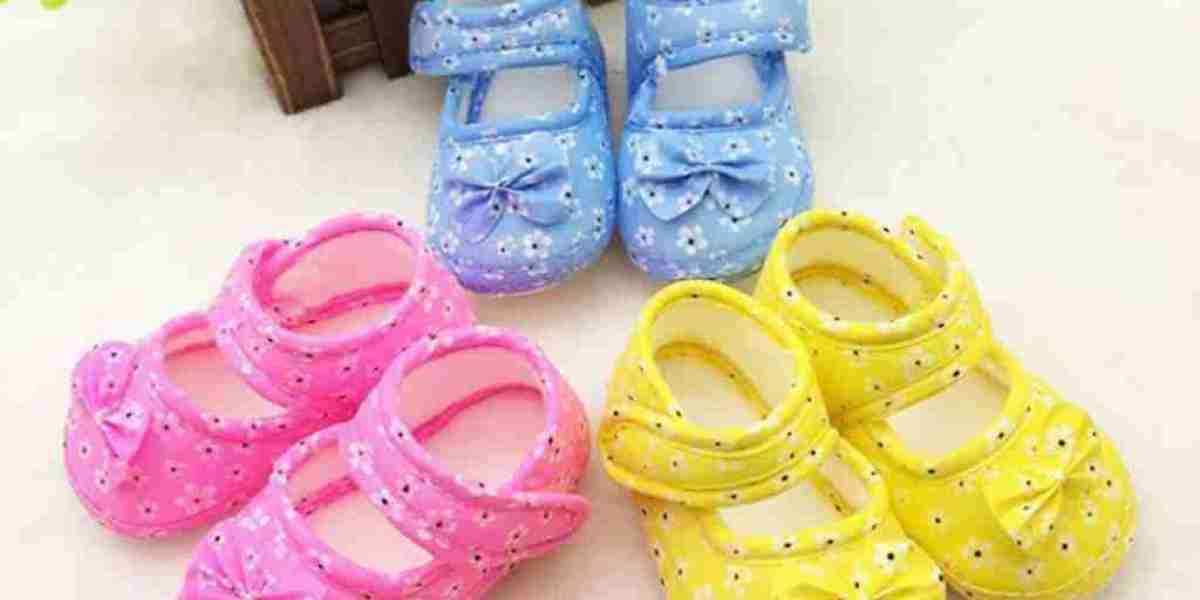The kids footwear market is not only driven by innovation and branding but also faces significant challenges related to sizing and comfort. Growing feet require properly fitted, supportive shoes to ensure healthy development. However, many parents struggle to find the right fit due to inconsistent sizing, lack of adjustability, and limited awareness of foot health needs. In this blog, we explore the key challenges in the kids' footwear market and strategies brands are implementing to address them.
Key Challenges in Kids’ Footwear Sizing and Comfort
1. Inconsistent Sizing Standards
Unlike adult footwear, kids’ shoes lack universal sizing standards. Different brands follow varying size charts, making it difficult for parents to find the right fit for their children.
Solutions:
Brands are investing in detailed size guides and AI-powered virtual fitting tools.
Stores are offering in-person measuring services to ensure accurate sizing.
Some companies provide half-size and wide-fit options for better precision.
2. Rapid Foot Growth
Children’s feet grow quickly, often requiring new shoes every few months. Many parents purchase shoes a size up, but oversized shoes can lead to discomfort and improper foot development.
Solutions:
Brands are introducing adjustable shoes with stretchable materials and adaptable closures.
Subscription-based footwear programs are emerging, allowing parents to exchange shoes as their child’s feet grow.
Flexible shoe designs that accommodate slight growth spurts without compromising comfort are being developed.
3. Lack of Arch and Heel Support
Many kids' shoes prioritize style over support, leading to potential foot problems such as flat feet, improper posture, and discomfort.
Solutions:
More brands are designing orthopedic-friendly shoes with cushioned insoles, arch support, and heel stability.
Podiatrists are collaborating with footwear companies to develop healthier shoe options.
Parents are becoming more aware of the need for ergonomic footwear through educational campaigns.
4. Materials and Breathability Issues
Some kids’ shoes are made from synthetic materials that trap moisture and cause discomfort, leading to issues like sweaty feet, blisters, and even fungal infections.
Solutions:
Footwear brands are increasing the use of breathable mesh fabrics, moisture-wicking insoles, and natural materials.
Anti-microbial treatments are being incorporated to reduce odor and bacterial growth.
Lightweight and flexible materials are replacing stiff and heavy shoes for enhanced comfort.
5. Balancing Durability and Flexibility
Children need shoes that are both durable and flexible, yet many options are either too rigid or wear out quickly.
Solutions:
Brands are experimenting with hybrid materials that provide durability without sacrificing flexibility.
Reinforced toe caps and high-quality stitching techniques are improving longevity.
Parents are encouraged to choose shoes with flexible soles that promote natural foot movement.
Emerging Trends to Overcome Sizing and Comfort Challenges
1. Smart Footwear Technology
Brands are integrating smart sensors in kids' shoes to track growth and foot pressure points, ensuring better fit recommendations.
2. Sustainable and Adaptive Footwear
Eco-friendly materials and expandable designs are becoming a focus for brands looking to provide long-lasting, comfortable solutions.
3. Virtual Fitting and AI-Powered Recommendations
Online retailers are utilizing AI-driven sizing tools to help parents find the best fit without visiting physical stores.
Conclusion
Addressing sizing and comfort challenges in kids’ footwear is essential for ensuring healthy foot development and consumer satisfaction. Brands that invest in innovative solutions, such as adaptive designs, sustainable materials, and digital fitting tools, will gain a competitive edge in the market. As awareness around foot health grows, companies that prioritize comfort, support, and durability will continue to thrive in the evolving kids’ footwear industry.




